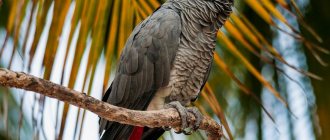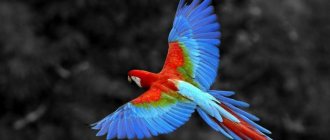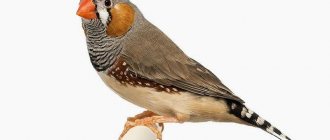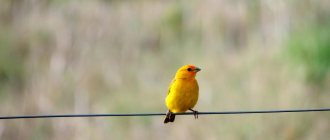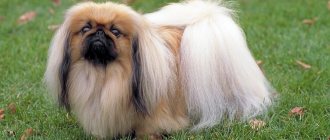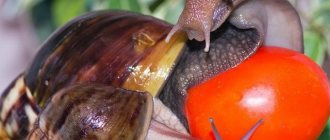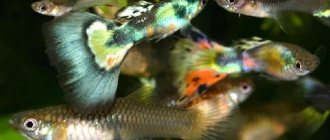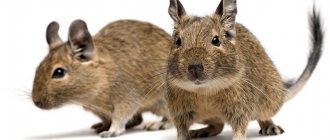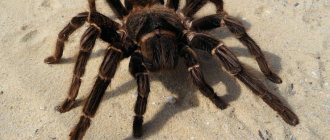Appearance
The bird grows up to 35 cm in length, has a strong beak and yellow eyes. In nature, there are 2 types of them - red-tailed and brown-tailed.
The plumage of the Gray Gray with a red tail is light gray with white streaks. The edge of the feather is whitish, which visually creates the appearance of scales. The paws match the color of the plumage, but the beak is black.
The color of the brown-tailed species is darker, the tail is gray. There is a small yellow or pale pink spot above the beak.
The plumage of these birds is not everyone's cup of tea, but their intelligence and conversational abilities are impressive. With the right approach, their vocabulary can reach up to 1,500 words; parrots are able to recite poetry and sing songs. Breeders claim that the birds understand everything and reciprocate their feelings to their owner. Caring for and maintaining such pets without certain knowledge and skills is a difficult task.
Care
This species is not suitable for a novice parrot lover, since the bird requires special treatment. Keeping Grays at home is quite difficult.
The food must be saturated with all necessary vitamins. Grays are more likely than other parrots to be deficient in vitamins A and D.
Keeping a parrot involves purchasing a spacious cage. You can build an aviary. This bird is big and needs space. The gray parrot spends most of its time free, walking around the room or flying from one corner to another. They only need the cage to sleep. A strong house for the bird is chosen, since it constantly tries to leave it. Keeping and feeding birds in a cage should not be permanent.
For complementary feeding you need to purchase 2 containers. One is intended only for dry food, the other for fresh vegetables and fruits. Also do not forget about the drinking bowl.
The bird house is placed near the wall, so the pet feels protected. Choose a place that is dry and warm, without drafts. You cannot place the cage above eye level: this way, a smart bird will imagine itself to be the boss in the house, and problems will arise with its upbringing. The cage should be at the level of the person’s shoulder girdle or head.
Particular attention is paid to the birds' play area. Toys are important for Grays. He develops with them, communicates, and does not let himself get bored.
Everything you need should be here: perches, mirrors, hanging toys, swings. In the absence of the owner, the bird will have fun in its own amusement park and will not get bored. Birds chew various objects out of boredom; for this purpose, tree branches and ropes are placed in the cage, which can be pecked.
This bird is sociable. When buying her, you need to know that she will not sit in a cage, but will happily read the newspaper with her owner, help in the kitchen, tap on the computer keyboard and watch a new movie in the company of her breadwinner. Communication is the main secret of how to care for and maintain a bird.
If you minimize communication with your pet, its psychological health will be upset and behavioral problems will begin. Therefore, busy people who are never at home should not get a parrot. He needs constant attention and care.
How to convince Grays to eat a varied diet?
Gray parrots are very conservative by nature. If at an early age they are not taught to try different foods, then in adulthood it will be difficult to persuade them to eat healthy and nutritious carrots. But don’t despair, here are some effective tips:
- The best example for a feathered pet can be the owners themselves. Eat broccoli and other goodies in front of your gray friend. The bird's curiosity should take over. Not today, but in a month.
- Present food as a toy. Place the lettuce leaves not in a regular feeder, but hang them using special devices, skewers, or clothespins.
- Offer food in a variety of formats. Some birds prefer grated vegetables, while others only eat diced ones. Use your imagination to identify your pet's taste preferences.
- Praise the bird even if it just touched a new product.
- Hide food, for example by wrapping cereal in paper like candy. Let the parrot fuss and try to turn around to get to the tasty treat.
Diet
Brown-tailed parrots eat any food for birds; there will be no problems with what to feed the gray parrot. His favorite delicacy is fried sunflower seeds. They add no more than 2.5 tbsp to the food for Grays. l. Sunflower seeds are very high in calories, you should not abuse them. Also, the bird’s diet should include sprouted grains, rich in vitamins and microelements. Gray food can include all types of grains.
The gray parrot has a special love for nuts. They can be fed to Grays in any form. But their number should be strictly limited so that the bird does not become obese. Fresh vegetables and fruits and herbs are added to the diet daily. Once a week you need to give 1 tsp of cottage cheese. It is correct to feed the Gray at the same time. It is important to decide in advance when and what to feed the Gray at home.
Porridge for Grays
For a balanced menu, the bird must be offered porridge. Many owners make not only mono-porridges, but also prepare complex mixtures, which include many components.
Recommendations
- List of cereals for porridges: rice, buckwheat, millet, pearl barley, beans, oatmeal, barley, lentils, peas.
- Soak the legumes overnight before cooking.
- Porridge for Grays should be cooked only in water, without adding salt, sugar, or butter.
- Instead of sweets, it is better to add grated fruits or vegetables.
- Gray beauties have their own taste preferences, so experiment, because some birds like viscous porridge, and some like crumbly ones.
Common diseases
Aspergillosis in birds is quite common. The appearance of this disease is provoked by fungi, which can also be found in human homes. They are not scary for a healthy bird with a strong immune system, but if it weakens, a fungal infection will enter the body.
Symptoms of aspergillosis in a gray parrot:
- wheezing in the sternum at rest;
- wheezing;
- blue discoloration of the periocular circle;
- poor appetite;
- digestive problems;
- lethargy.
Often the owner determines the appearance of the disease in the final stages, when treatment is useless. Therefore, for preventive purposes, it is recommended to show your pet to a specialist once a year. This is an important point in the process of caring for and maintaining African Gray parrots.
To prevent the disease, the following is necessary:
- Compliance with all hygiene standards:
- regularly clean your pet’s cage;
- throw away any leftover food;
- change water for gray parrots several times a day;
- ventilate the room;
- Wash the feeder and drinker thoroughly.
- Control your diet. The bird must receive sufficient quantities of all the substances it needs.
- Long sleep. The bird should fall asleep at the same time every day. The care of the gray parrot at this time should be special.
Aspergillosis is quite difficult to treat. Therefore, it is better to prevent its occurrence and remember that the main symptom of aspergillosis in Gray Grays is difficulty breathing and lethargy.
Self-plucking
At home, gray parrots can pull out their feathers. This does not happen to them in their natural habitat. Errors in the maintenance of the gray parrot have an impact. Experts name 2 reasons for the appearance of this condition: improper care and depression.
Violation of the condition of the bird is accompanied by other symptoms:
- fading of plumage;
- decreased interest in games;
- labored breathing;
- arrogance.
All these signs indicate the onset of depression. The owner urgently needs to pay attention to his pet and find out how to properly care for the brown-tailed gray parrot. Talk to him more often, do household chores together, engage him in puzzles for parrots and other games, buy different toys for your parrot.
Buying a Gray: tips and tricks
Before buying a gray parrot, you need to carefully familiarize yourself with all aspects of its life and evaluate your capabilities well. Without the appropriate experience and dexterity, it will be very difficult for a beginner to cope with such a bird. But, if opportunities allow, there is enough space and time for care, then you can safely get this extravagant bird.
Experienced breeders recommend buying a Jaco at the age of 3-4 months, since it is at this age that the chicks best adapt to the environment and are best trained. It is better to buy chicks from a professional nursery that has been specializing in breeding gray parrots for several years. When purchasing, you should pay attention to the pet’s appearance and assess its health status. If the parrot is raised in a nursery, then it must have a permanent ring with the initials of the establishment.
Video Who should not have a Jaco
A healthy parrot has these characteristics
:
- Active, cheerful, curious.
- Has average fatness.
- Defecates hard feces.
- The plumage is shiny, clean, without dirt or bald spots.
- Has clear nostrils and clear eyes.
Water treatments
Grays love to splash around in warm water. But not everyone knows how and how much to bathe a parrot. Often he does not refuse water procedures, but in captivity there are individuals that are afraid of water. Then the owner has the problem of how to bathe a timid pet.
They accustom them to water unobtrusively, showing affection and patience. To begin with, just put a bathing suit with warm water in the cage. You can throw a nut or parrot toys into it to interest the bird.
Spraying her with water from a spray bottle will also give her a lot of pleasure. This procedure will remind you of the instincts inherent in nature - about swimming in the rain. Gray parrots prefer to bathe in the shower. First, make the stream of water weak, accustoming the pet to washing. There are several more ways to bathe a gray gray parrot.
You can periodically open the tap in the bathroom and observe how your pet reacts. The sound of water will attract him, he will try to wet his feathers in the warm liquid. You can also add wet greenery, grass, and leaves to the cage. In nature, parrots bathe in dew.
Fresh fruits and vegetables in the Gray's diet
These are natural vitamins, the importance of which is undeniable. If the bird refuses to eat them, your task is to convince him otherwise.
Recommended list of fruits and berries: apple, apricot, pear, grapefruit, cherry, melon, kiwi, raspberry, peach, banana, blueberry, grapes, plum, currant, blueberry, lemon, cranberry, rosehip, gooseberry, pineapple.
Recommended list of vegetables: sweet and hot peppers, zucchini, carrots, white cabbage, cucumber, green peas, squash, pumpkin, turnips, zucchini, beets, tomato.
How to give?
- Wash the product thoroughly.
- Peel citrus fruits, remove pits from cherries, apricots, and plums.
- Summer berries can be frozen and offered during the winter. To defrost, use the command temperature.
- It is better to blanch some vegetables - pour boiling water over them for a few minutes, such products include broccoli, Brussels sprouts, and beets.
- You can offer boiled vegetables. But they contain much less useful elements.
- Offer dried fruits only if they are made by yourself, because... store-bought ones may contain harmful sugar and preservatives.
Visiting or visiting the veterinarian
To go outside, the owner must have a carrier for the parrot. It does not allow the bird to fly away; the bird feels protected in the house.
A travel cage for large parrots should be made of soft, non-traumatic materials. A parrot carrier made of wicker or plastic is ideal for both short walks and travel.
If there is no such device in the house, and you need to leave the house urgently, you can use a cardboard box as a carrier and temporary home for your gray Gray. A container without foreign odors will do. It is necessary to make a ventilation hole in it, and cover the bottom with fabric.
Communication with your pet
Keeping and caring for a gray African parrot are based on building relationships. This bird has a character, and it is not easy to deal with it. In addition to worrying about what to feed the naughty Gray, you need to build a line of behavior with him. The chick is immediately accustomed to the cage. Playing around is only allowed in this place with toys purchased specifically for a small gray parrot. If this is not done, everything in the house will be damaged: wiring, furniture, books. You cannot give the bird freedom and consider himself the master of the house, otherwise he will begin to raise the breadwinner with his beak. Such actions are stopped by sending the bird into a cage for a while.
Careful care, feeding of the gray gray parrot and its maintenance at home can be done by experienced poultry farmers. The most difficult thing in this matter is to build the right line of behavior with your pet. The bird must be constantly occupied, otherwise problems will arise. Keeping a parrot can be entrusted to people who have patience and love for these birds. Patience and care will bear fruit - the owner will receive a smart, interesting friend for many years.
Branches in Gray's diet
Twigs are needed not only for beak care, but also as a nutritional element. It is very easy to convince them to eat, because... for a bird it is actually a toy that can be chewed.
Recommendations
- Take branches away from busy highways and roads.
- Before serving, wash thoroughly and scald with boiling water.
- It is best to use fruit trees and shrubs: apple, cherry, currant, rowan, raspberry, hawthorn, as well as linden, birch, alder, willow, maple, hazel, ash.
- Offer branches not only in summer, but also in winter. Place the cut branch in water until the buds swell.
